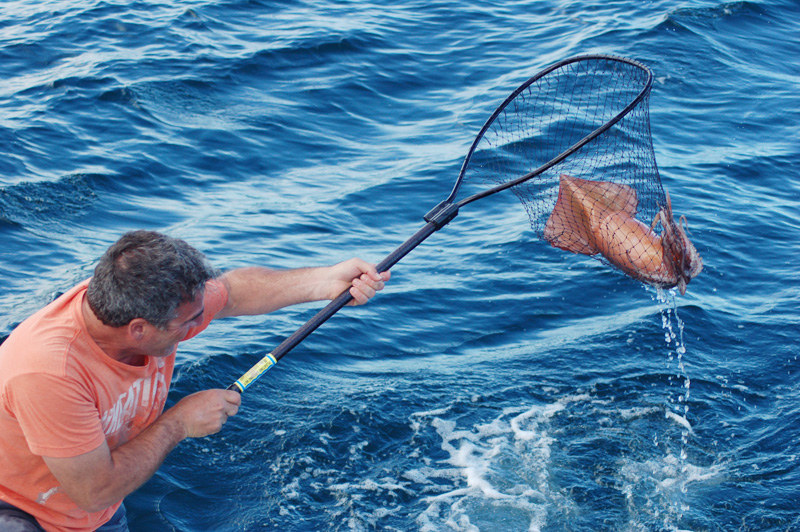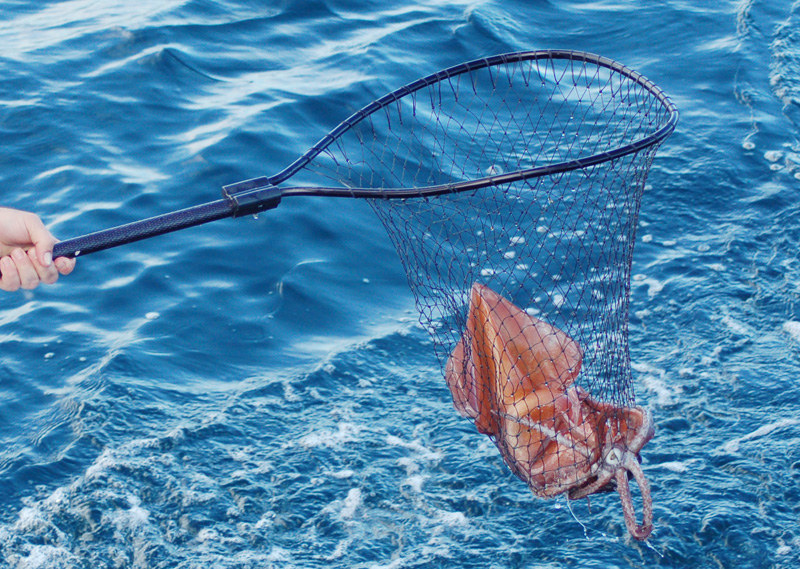
Calamari Anyone?
For many sailors, one of the highlights of sailing south off the west coast of Baja is fishing in its abundant waters. Already this year, sailors have reported catching prime game fish such as wahoo as big as 65 inches long, without even using a rod and reel. One thing that’s been peculiar this year, though — at least in our experience — is the presence of schools of Humboldt squid, many measuring 3 feet long. During October’s Baja Ha-Ha rally many sailors observed and/or caught them as they snapped at trailing lures.

©2011 Latitude 38 Media, LLC
Some crews found them to be freaky creatures with an ‘ick’ factor that was pretty much off the charts, while others landed them, bled them of their ink and sauteed them in butter and garlic for a splendid meal. We thought the squids we observed were huge until we learned that these voracious eaters can grow to be longer than an adult human, and weigh up to 100 lbs. Propelled by the rapid ejection of water, they can travel at speeds up to nearly 15 knots.

©2011 Latitude 38 Media, LLC
Anyone who remembers Jules Verne’s Twenty Thousand Leagues Under the Sea might guess that giant squid live primarily in the deep ocean, which is true. Research subs have spotted them as deep as 2,500 feet. But they’re said to occasionally come to the surface to feed, which is probably why we, and many others, chanced upon them.
Recent El Niño events — which bring warm water farther north — as well as a reduction of their natural predators are thought to be responsible for giant squid populations being sighted in recent years along the coasts of California, Oregon and Washington, as well as Baja. So keep a sharp eye out when trolling offshore, and keep your sauté pan handy. But watch out for that sticky black ink. If that gets on your teak decks or custom cockpit upolstery you’ll be as grumpy as Captain Nemo on his worst day.
